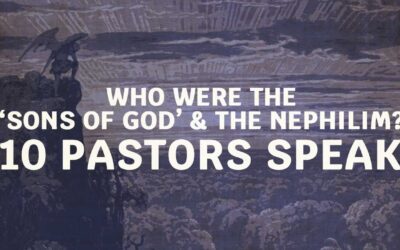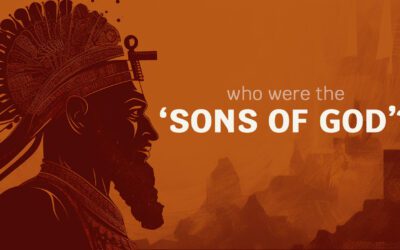If you have recently begun researching the debate and history of interpretation surrounding the Nephilim, Genesis 6, and the Book of Enoch and are feeling inundated with the numerous arguments and disagreements involved, we’ve prepared the following overview of most of the key concepts!
How should Genesis 6:1-4 be understood?
Different worldviews will affect the interpretation significantly.
- Literally – whatever happened in Genesis 6, it describes a real event.
- Mythologically – this wasn’t necessarily a real event, at least in the details.
Who were the ‘Sons of God’?
The common interpretations.
- Fallen angels taking human form – most ancient view with significant scholarly support
- Demons possessing men – new view that tries to honor the text while avoiding the unusual implications.
- Actual men from Seth’s line – Common view originating around 300 AD.
- Aliens – New view based on ancient aliens theories
- Leaders/judges – An old view, although not very popular
Who were the Nephilim?
A few of the most popular ways these mysterious characters are understood.
- Tall sons produced by this intermarriage whose acts became the stuff of legend
- Early heroes who were independent of the Sons of God and their romantic liaisons
- Myths
- Aliens
Why did this happen?
- Satan trying to corrupt mankind physically to interfere with the ‘promised seed’ of Genesis 3:15
- An angelic fall so egregious that they were punished with chains of darkness in Tartarus
- Just a case of pretty girls and boys who didn’t listen to their mommies
Was this the real cause of the flood?
- No, the flood was directed at mankind’s wickedness, not the actions of supernatural disobedience
- Yes, the flood destroyed the wickedness that angels and men had created
Unhelpful Preconceptions
Many of our ideas and traditions that aren’t necessarily biblical make this story harder to grasp than it needs to be. Such as:
- One-third of the angels fell before man’s fall – a possibility but not a certainty. This was popularized by commentators as a possible scenario and then immortalized in Milton’s Paradise Lost. Many modern commentators realize that the narrative of angelic falling away may have been more gradual than that narrative posits.
- Angels can’t have sex – This supposes more than we are told. The Bible is clear that angels can take human form, eat food, and Jesus never said that it is impossible for them to marry, only that ‘angels in heaven do not’ marry. In contrast, it is mankind that is made ‘a little lower’ than the angels. And most early church fathers and the apostles had no such objections.
- ‘Good’ angels wouldn’t do this – For something to be corrupt, it must start out ‘good’ originally. That’s our belief even about Satan himself – he didn’t start out evil, but rather ‘very good’. Many early church theologians believed these angels were originally sent as messengers, and over time became seduced by mortal women.
- This topic is fringe, bordering on a conspiracy – No, it was well known and basically unchallenged by Jewish historians and scribes (as evidenced in the dead sea scrolls) and by the early Christian church, whose leaders spoke of it often as a real event. The power of Augustine’s dismissal of the ‘angel view’ is what caused it to fall out of favor for more than one thousand years. Recent discoveries have shown how accepted and ancient this view was, and modern commentators are split over the issue. There is nothing fringe about the belief that the realms of existence often intersect. And actual fringe views should be challenged with scripture.
Quick Q&A
Things to Know – if you’re in a rush.
History of Interpretation
The earliest Jewish and Christian commentators, scholars and church fathers generally understood this passage (almost without exception) to mean angels intermarrying with human women. The way they speak of it is as if they take it for granted that it occurred in this way and rarely mention any controversy that would suggest otherwise.
This interpretation fell out of favor three or 400 years after Christ, largely due to the influences of early Catholic theologians such as Augustine
Today the subject has enjoyed renewed interest and attention. A great deal of well-known, Conservative Christian theologians have returned to the view of the angels as being the best view to explain the text.
This renewed interest has resulted in more quality scholarship on the subject than ever before, as well as an abundance of views that have little to no scriptural support.
Connection to Other Cultures
This story coincides with many other myths (found worldwide) that tell a similar story of supernatural beings and mortals birthing demigods or giants. The similarity and widespread nature of these stories indicate that they come from a common source.
Sources
Most early Christian church fathers mention this story without challenging its traditional interpretation. The Book of Enoch and other pseudepigraphical books were well known during the time of Christ, and so with that knowledge, passages like in 1 Peter and Jude are understood with their intended meaning (even using the same terminology). These books and even references by early church fathers tell us how the story was believed at the time, not necessarily more than that.



